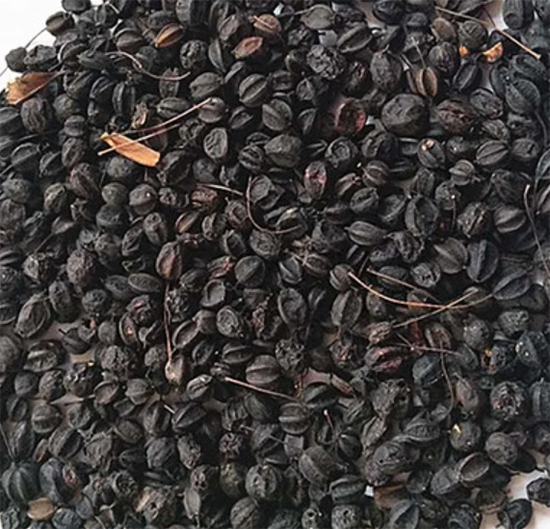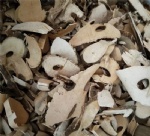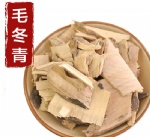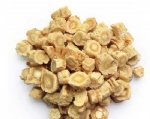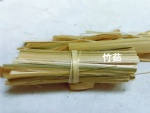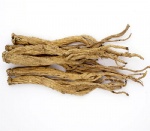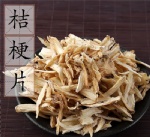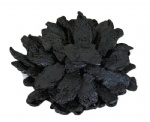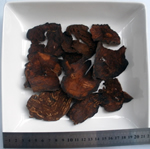
|
KWOK SHING HONG |
|
|||
Products CategoryContact Us
Add: China |
RADIX ACANTHOPANACIS SENTICOSIProduct name : RADIX ACANTHOPANACIS SENTICOSI Item : GMP Details :Acanthopanax (Eleutherococcus senticosus (Rupr. & Maxim.) Maxim.), aliases: Kangguai stick, tiger liao, a hundred needles. Shrubs, 1-6 m tall; many branches. Leaves have 5 leaflets, rarely 3; petioles are often sparsely thorny, leaflets papery, elliptic obovate or oblong, apex acuminate, base broadly cuneate, upper rough, dark green, coarse hairs on veins, lower light green , with pubescence on veins, sharply serrate edges; petiole with brown pubescence. Umbel single terminal, with many flowers; total pedicel glabrous, pedicel glabrous or slightly hairy at the base; flowers purple-yellow; calyx glabrous; petals ovate; Fruit globose or ovoid. The flowering period is June-July, and the fruiting period is August-October. Distributed in Heilongjiang, Jilin, Liaoning, Hebei and Shanxi, China. Born in hillside forests and roadside bushes; often cultivated in medicinal gardens. Root bark dispels rheumatism, strengthens muscles and bones, soaks wine to make Wujiapi wine (or makes Wujiapi powder). Root bark contains volatile oil, tannin, palmitic acid, linseed oleic acid, vitamin A, B1. The root bark can also be used as a substitute for "Wujiapi" for medicinal purposes; the seeds can be used to extract oil and make soap. Acanthopanax has a long history of being widely used as medicine in Chinese medicine. It can "eat food, strengthen strength, and not forget things". In the Northern and Southern Dynasties Liu Song Lei's "Pao Shao Lun" records that Wujiapi has the function of "yang people make yin, and yin people make yang". Foreign countries have carried out systematic research on ginseng and its close relative plant, Acanthopanax, which proves that Acanthopanax and ginseng have similar pharmacological effects and clinical curative effects. Acanthopanax tender stems and fresh leaves contain carotene, riboflavin, ascorbic acid and rich vitamins. Its tender stems have a unique flavor and a slightly bitter fragrance. It can be fried, cold-dressed, stuffed, soup, etc., and can also be made into soft-packed cans with various flavors and ready-to-eat. Its leaves can be used as tea, the tea has a special aroma, the soup color is light brown, and the aftertaste is sweet. It retains the unique nutritional and medicinal ingredients of Acanthopanax, and has a good anti-fatigue effect. The annual growth of Acanthopanax is large, the root system is developed, and the lateral roots can reach more than 1 meter, and it has strong soil-fixing and anti-corrosion capabilities. The above-ground plants grow rapidly, with lush branches and leaves, and strong stress resistance. They have strong growth potential in the terrace-ridge planting system, and play an important role in reducing runoff and soil erosion. The value of eleuthero in medicine and food has driven the economic value of its market. Acanthopanax seeds can be extracted for oil and made into soap for people to use. The fruit can be eaten and brewed, and a series of products such as Wujia wine have been continuously introduced to the market. Function Indications: Tonify the kidney and strengthen the waist; replenish qi and soothe the nerves; promote blood circulation and dredge collaterals. Deficiency of the kidney and frailty; soreness and weakness of the waist and knees; delayed movement in children; weakness of the spleen; edema due to qi deficiency; loss of appetite; insomnia and dreaminess; forgetfulness; Compatible prescription: 1. Treatment of weak muscles and bones in children, late walking: 9 grams of Wujiapi, 6 grams each of madder, papaya, and achyranthes bidentata. Decoction in water. ("Ningxia Chinese Herbal Medicine Handbook") 2. Treatment of rheumatic pain: 15 grams of Wujiapi, decocted in water, or soaked in rice wine. ("Gansu Chinese Herbal Medicine Handbook") 3. Treatment of rheumatic arthritis, joint spasm and pain: a. Wujiapi 9 grams, Duhuo 6 grams, Fangfeng 6 grams, Mori 9 grams, Clematis 9 grams, decocted in water. ("Handbook of Commonly Used Chinese Herbal Medicine in Liaoning") b. 15 grams each of Chuanshanlong, Baixianpi, and Wujiapi, soaked in white wine for 24 hours, and take 10ml daily. ("Shan-Gan-Ning-Qing Chinese Herbal Medicine Selection") 4. Treatment of beriberi edema: 12 grams of Wujiapi, 30 grams of Astragalus. Decoction in water. ("Ningxia Chinese Herbal Medicine Handbook") 5. Treatment of edema and dysuria: 9 grams each of Wujiapi, Chenpi, Jiangpi, Poria, and Dabupi. Decoction in water. Barcode: GMP Ingredients: Eleuthero Specifications: 16oz (454g) Efficacy: wind-cold-damp arthralgia; waist and knee pain; flaccidity and weakness of muscles and bones; sluggishness; physical weakness; bruises; fractures; edema; beriberi; dampness and itching in the shade. Send Inquiry : |
Home
|
About Us
|
Products
|
News
|
Feedback
|
Contact Us
|
SiteMap
Copyright © 2025 KWOK SHING HONG All Rights Reserved
Copyright © 2025 KWOK SHING HONG All Rights Reserved






 KWOK SHING HONG
KWOK SHING HONG  ROOTS
ROOTS 